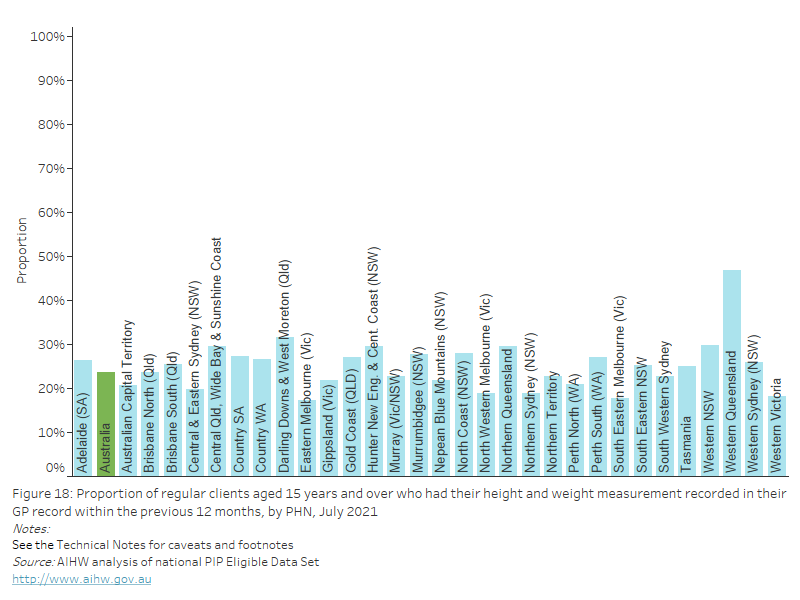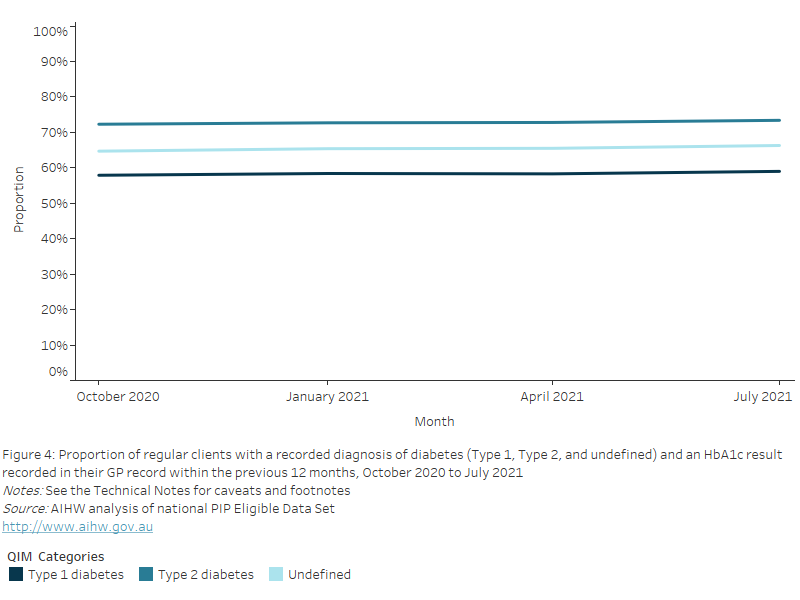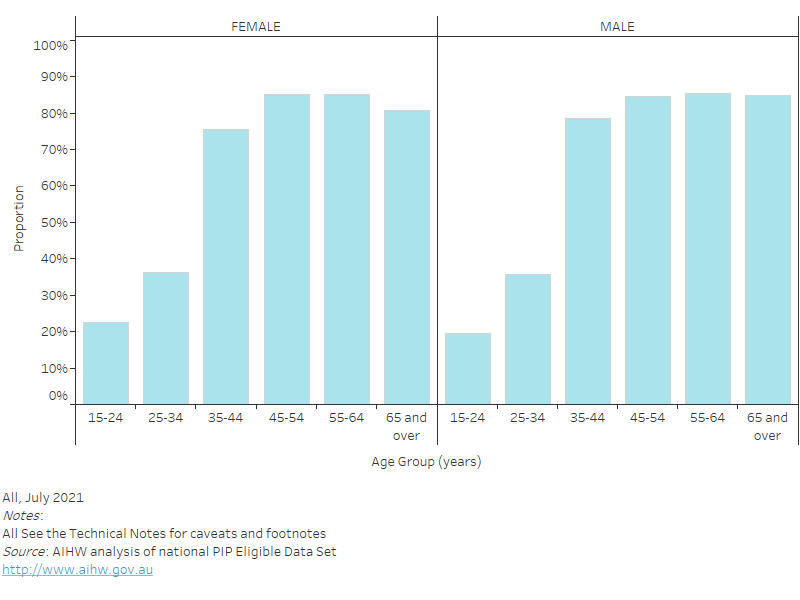QIM 8: Proportion of eligible regular clients with a record of the necessary risk factors in their GP record for CVD risk assessment
Assessment of absolute CVD risk based on multiple risk factors is more accurate than that based on individual risk factors due to the cumulative nature of risk effects. Absolute CVD risk assessment combines risk factors to calculate the probability that an individual will develop a cardiovascular event or other vascular disease within a specified time frame, usually 5 years (RACGP 2018). The risk assessment is useful for measuring risk in asymptomatic clients without established CVD (i.e. primary prevention). Clients aged 45-74 years with established CVD and/or with several other conditions who are already clinically determined to be at high risk of a cardiovascular event (NVDPA 2012) have been excluded from the measure as outlined in the PIPQI specification.
Capture of results recorded outside of the general practice setting
Results arising from clinical intervention conducted outside of the service that are known and recorded by the practice are included in the measure. Where the test results were recorded elsewhere (for example, a specialist service) and the information is not recorded in the clinical information system of the client’s usual general practice (for example, due to incompatible clinical information system between a practice and a specialist service), then these data will not be captured in the report.
Other sources of relevant data
There are other administrative data collections where the relevant data from these client-provider interactions are captured, e.g., Medicare Benefits Schedule (MBS) and the National Health Survey (NHS) conducted by the Australian Bureau of Statistics (ABS).
This indicator reports on the proportion of regular clients aged 45 to 74 years without a CVD diagnosis with 4 risk factors (tobacco smoking status, diabetes type or HbA1c result or fasting glucose tests, blood pressure, lipid levels) recorded in their GP record to enable CVD risk assessment.
As of July 2021, nationally, 48.5% of regular clients aged 45 to 74 years without a CVD diagnosis had the necessary risk factors recorded in their GP record to enable CVD risk assessment. This varied from 36.0% to 67.5% across PHNs.
Figure 42: Proportion of regular clients aged 45 to 74 years with the necessary risk factors recorded in their GP record to enable CVD risk assessment by PHN, July 2021

Nationally, between October 2020 and July 2021, the proportion of regular clients aged 45 to 74 years without a CVD diagnosis who had the necessary risk factors recorded in their GP record to enable CVD risk assessment, increased by 3.6% from 44.9% to 48.5%.
Figure 43: Proportion of regular clients aged 45 to 74 years with the necessary risk factors recorded in their GP record to enable CVD risk assessment, October 2020 to July 2021

Proportion of eligible regular clients aged 45 to 74 years without a CVD diagnosis with a record of the necessary risk factors in their GP record for CVD risk assessment, by age and sex
As of July 2021, nationally, the proportion of regular clients aged 45 to 74 years without a CVD diagnosis with the necessary risk factors recorded in their GP record to enable CVD risk assessment increased with age and was:
- highest in the 65–74 years age group for both females (54.8%) and males (55.9%).
- lowest in the 45-54 years age group for both females (41.8%) and males (42.0%).
Figure 44: Proportion of regular clients aged 45 to 74 years with the necessary risk factors recorded in their GP record to enable CVD risk assessment, by age and sex, July 2021

- Data for clients are included if they have record of necessary risk factors (age, sex, tobacco smoking status, diabetes type or HbA1c result or fasting glucose tests, blood pressure, lipid levels) to assess CVD risk assessment.
- Clinical definitions for CVD vary across clinical information systems, as different coding schemes are used. This may lead to some variation in the number of clients who will be picked up by different systems (Department of Health 2017).
- Eligible clients who do not have a current diagnosis of a cardiovascular condition and have a record of age, sex, tobacco smoking status, systolic blood pressure, diabetes status/diabetes screening test, total cholesterol and HDL cholesterol levels in their GP record are included in the measure.
- Clients are excluded from the measure if they
- refused measurement,
- have a recorded diagnosis of CVD,
- are regular and without known CVD, but information for ALL risk factors is not recorded.
Department of Health 2017. National Key Performance Indicators for Aboriginal and Torres Strait Islander primary health care - Data Validation Project Report. Canberra: Department of Health.
NVDPA (National Vascular Disease Prevention Alliance) 2012. Guidelines for the management of absolute cardiovascular disease risk. Viewed 12 August 2021.
RACGP 2018. Guidelines for preventive activities in general practice. 9th edition, updated. East Melbourne, Vic: RACGP.


